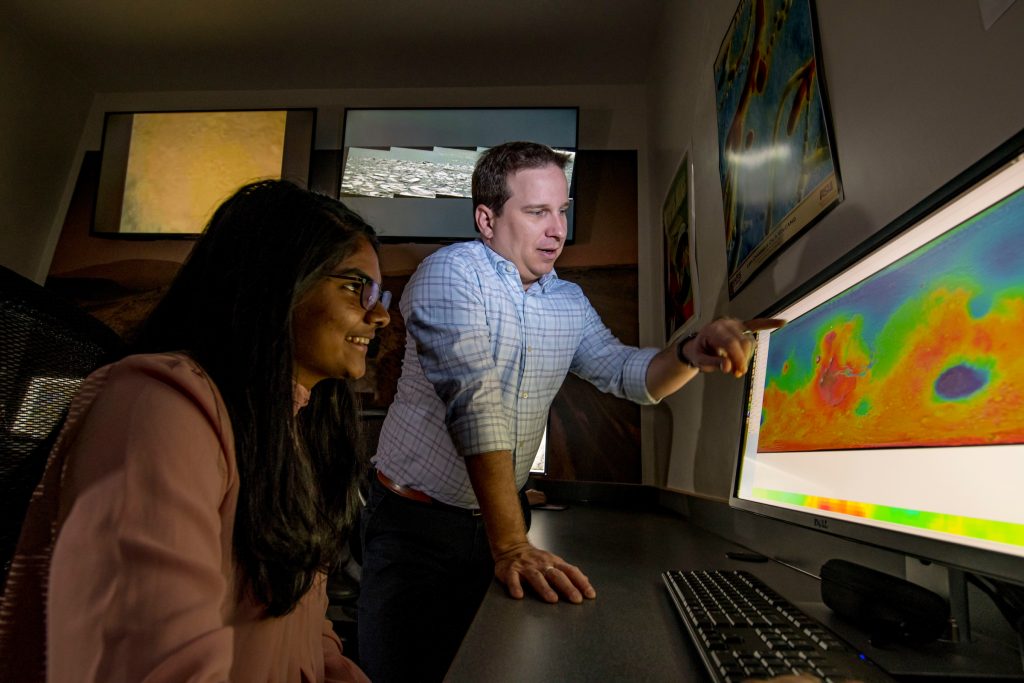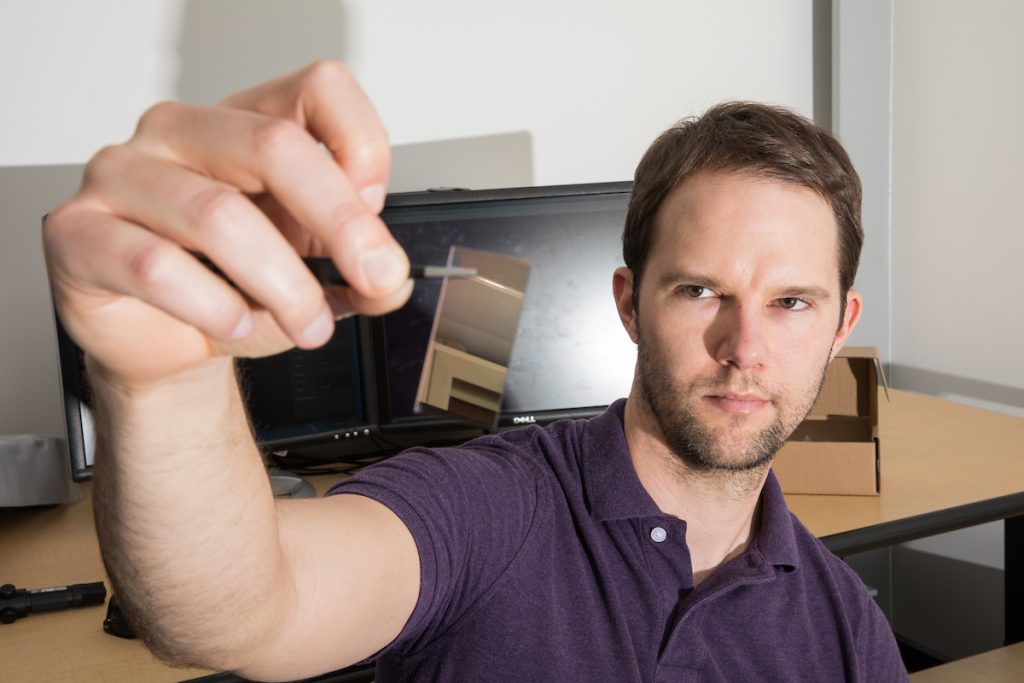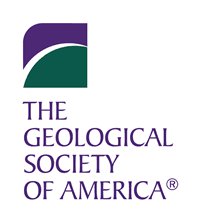When it comes to issues of outer space, there’s no question that Flagstaff is a Pluto town, through and through. But for the next year or so, the city’s astronomical focus will shift gears to center on the moon.
Exactly one year from today marks the 50th anniversary of the first time humans walked on that distant world, and Flagstaff played an integral role in their preparations for the history-defining mission.
From 1961 to 1972, the Apollo teams used northern Arizona’s… Read more
Jupiter’s moon count reaches 79, including tiny ‘oddball’
Twelve new moons orbiting Jupiter have been found—11 “normal” outer moons, and one that they’re calling an “oddball.” This brings Jupiter’s total number of known moons to a whopping 79—the most of any planet in our Solar System.
A team led by Carnegie’s Scott S. Sheppard first spotted the moons in the spring of 2017 while they were looking for very distant Solar System objects as… Read more
Brain Food: Mars Rover Digs Up Organic Material | KNAU Arizona Public Radio

Mars Rover Curiosity has dug up organic material in rocks just below the surface of what’s believed to be an ancient Martian lake bed.
Planetary geologist Mark Salvatore of Flagstaff says the discovery of carbon-based molecules, butane and propane, suggest they may be the result of the breakdown of larger, more complex organic molecules—the kind that could be related to life.
“These organic molecules are really the backbone to what could form life, and the fact that we found all these… Read more
Studying Mars on Earth: NAU scientist conducting astrobiological research in Mojave Desert

By Kerry Bennett
Office of the Vice President for Research
Much research in the field of astrobiology—the study of life in the universe—focuses on the habitability of extraterrestrial environments in our solar system and beyond. NASA’s Planetary Science and Technology from Analog Research (PSTAR) program sponsors research exploring the Earth’s extreme environments to develop a sound basis for conducting astrobiological research on other… Read more
NAU physicist receives prestigious 2018 Cottrell Scholar Award

By Julie Hammonds
Office of the Vice President for Research
A Northern Arizona University physicist who studies complex, hybrid nanomaterials has been recognized for his academic leadership and the quality and innovation of his research. The Research Corporation for Science Advancement (RCSA) recently named assistant professor John Gibbs a 2018 Cottrell Scholar. This award includes a three-year, $100,000 grant to advance his teaching and research.
One of only 24… Read more
NAU students, faculty participate in annual Geological Society of America meeting in Flagstaff

Dozens of Northern Arizona University faculty and students participated in the annual regional Geological Society of America Rocky Mountain/Cordilleran Joint Sectional meeting, held in Flagstaff in May.
The meeting consisted of short courses, field trips, student programs, exhibits and different types of sessions, many of which took place on the NAU campus. About 25 NAU students received free student registration, since the College… Read more